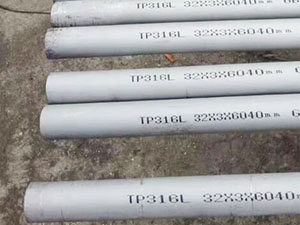ASTM A240 AMS 5513 5511 stainless steel 304 plate sheet finish 2B
304 Stainless Steel Sheet, is the most popular and economical of the stainless steels. 304 Stainless Sheet offers good corrosion resistance to many chemical corrodents as well as industrial atmospheres and marine environments. 304 Stainless Sheet may become slightly magnetic when worked and is not heat treatable.
304 and 304L ASTM A240 stainless steel plate is a standard 18-8 material – meaning it contains 18% chromium and 8% nickel. 304 Stainless steel plate is one of the most versatile stainless steel materials available. It has excellent forming and welding characteristics.
SS Sheet & SS Plate Applications
Stainless steel sheet & SS plate provide a low maintenance, corrosion resistance solution for a variety of industrial applications. Some of the typical uses for stainless steel include:
Typical Chemical Requirements
| |
304 |
304L |
| Carbon, Max % |
0.07 |
0.03 |
| Manganese, Max % |
2 |
2 |
| Phosphorus, Max % |
0.045 |
0.045 |
| Sulphur, Max % |
0.03 |
0.03 |
| Silicon Max |
0.75 |
0.75 |
| Chromium range |
17.5-19.5 |
17.5-19.5 |
| Nickel range |
8.0-10.5 |
8.0 - 12 |
| Nitrogen Max |
0.1 |
0.1 |
Mechanical Properties
| |
304 |
304L |
| Tensile Min |
75 ksi |
70 ksi |
| Yield Min |
30 ksi |
25 ksi |
| Elongation Min |
40% |
40% |
| Hardness Max |
95 HRB |
95 HRB |
Material Grade Considerations for Stainless Steel Sheets & Plates
Stainless steel 304 and 316 both provide durability and corrosion resistance for indoor and outdoor applications. There are, however, a few slight differences between the two alloy grades that you should consider before selecting a material for your project.
Grade 304 stainless steel sheet and plate have a high nickel and chromium content, which provides excellent corrosion resistance. Stainless steel 304 is also nonmagnetic, has excellent formability, and is easy to fabricate, making it an excellent option for a broad range of light-duty and general-purpose applications.
Grade 316 stainless steel sheet and plate also have high nickel and chromium content, but the addition molybdenum further improves the corrosion resistance, especially against chlorides or chlorinated substances. These properties make grade 316 stainless steel sheet and plate an ideal choice for medical applications, marine environments, refining or chemical processing, and other highly corrosive environments.
304-2B Stainless Steel
Premium stainless steel grade 304-2b is a very low carbon, austenitic chromium-nickel steel with good corrosion resistance, superior resistance to intergranular corrosion following welding or stress relieving, and high malleability. The low carbon content in 304-2b stainless steel limits the formation of harmful carbides to such an extent that this grade may be safely used for most operations of welded construction, as well as where the service temperature is limited to 800° F. Additionally, grade 304-2b sheet is not magnetic in the annealed condition and cannot be hardened through heat treatment.
What Is 2b Finish?
Stainless steel 2b finish is a smooth finish as opposed to the common brushed finish seen on items like appliances. 2b is moderately reflective that is similar to a cloudy mirror. It is created through cold-rolling annealing and a pickled and pinch-pass, or descaling. A 2b Mill finish is achieved through the addition of a light cold roll pass. This is the most utilized stainless steel finish in the world and it is the typical finish for many grades including 304 stainless steel. This finish is easy to maintain which makes it popular for everything from bakeware and flatware to plumbing fixtures, wheel covers, and many industrial applications such as solar panels and other equipment.









.jpg)
.jpg)

